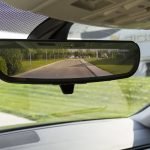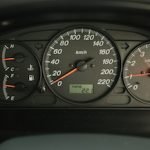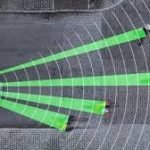In order to avoid last-minute moves and spot possible traffic hazards, you should always look down the road ahead of your vehicle. When you are looking far enough ahead in your travel path, you will be able to spot hazards early and you will be well-prepared to react to them.
Look ahead for signs of trouble. Watch the brake lights of cars both ahead of you and in other lanes. Start braking early if you see traffic ahead of you slowing down.
Also, check the space between your car and any vehicles in the lane next to you. Use your rear-view mirror and side-view mirrors every three to five seconds. After a quick check of the mirrors or a fast look over your shoulder to check the rear, return your attention to the path immediately ahead of you. Don’t stare. If there is no immediate problem in the path ahead, check the mirrors or look over your shoulder again as needed.

It is very important to check behind you before you;
- change lanes,
- slow down quickly,
- reverse, or
- drive down a long or steep hill.
Check traffic behind you often. This way, you will know if cars are tailgating or coming up behind you too fast. You may have time to get out of the way before being hit from the rear.

You should also glance at your instrument panel often to ensure there are no problems with the vehicle and to verify your speed. Determine what your gauges tell you and then quickly return your attention to your path of travel.

